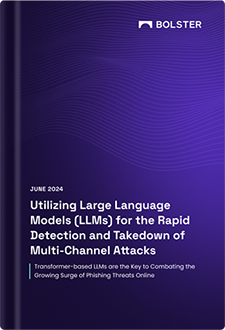What is a URL scanner?
A URL scanner is a tool or software that examines and analyzes Uniform Resource Locators (URLs) for potential security threats or risks. It is a technology commonly used by IT security and risk management professionals to assess the safety of website links and protect against malicious activities.
URL scanners work by scanning the URL for various indicators of potential security issues, such as malicious code, phishing attempts, malware, or suspicious behavior. They can also check if the website is blacklisted or has a poor reputation due to prior abuse.
The scanner typically uses a combination of techniques to evaluate the URL, including signature-based detection, behavior analysis, reputation checks, and heuristics. Some scanners may also utilize machine learning algorithms to identify previously unknown threats.
By using a URL scanner, IT professionals can prevent employees or users from accessing potentially unsafe websites that could compromise the security of their systems or data. The scanner can identify and block dangerous URLs, providing an additional layer of protection against cyber threats.
URL scanners are often integrated into web browsers, email clients, or security software, automatically checking URLs when they are accessed or clicked. They can also be used as standalone tools, allowing users to manually scan specific URLs or entire websites.
Overall, a URL scanner is a valuable tool for IT security and risk management professionals to safeguard against potential security risks and ensure the safety of their systems and networks. It helps identify and mitigate threats, protecting both individuals and organizations from cyberattacks.
How often should I run a URL scanner?
As an IT security and risk management professional, it is essential to regularly run a URL scanner to ensure the safety and integrity of your systems and data. The frequency at which you should run a URL scanner depends on several factors, including the size and complexity of your organization, the level of online activity, and the potential risks you face.
In general, it is recommended to run a URL scanner on a regular basis, such as weekly or monthly, as part of your routine security practices. This will help identify any malicious or suspicious URLs that may pose a threat to your network or users. By regularly scanning URLs, you can stay ahead of potential attacks and vulnerabilities.
However, it is important to note that the frequency of URL scanning may need to be adjusted based on the specific circumstances of your organization. If you are an organization with high online activity, deal with sensitive data, or operate in an industry with a high risk of cyber threats, you may consider increasing the frequency of URL scanning to daily or even multiple times a day.
Additionally, it is crucial to run a URL scanner whenever you make significant changes to your network or website infrastructure. This includes implementing new systems, adding or removing web applications, or deploying updates or patches. By doing so, you can ensure that any potential vulnerabilities introduced during these changes are promptly identified and mitigated.
In summary, running a URL scanner regularly is a fundamental practice for IT security and risk management professionals. The frequency of scanning should be determined based on the size, complexity, and level of risk of the organization’s IT infrastructure.
About CheckPhish
CheckPhish is the place to start for domain monitoring. CheckPhish is a real-time URL and website scanner. Once a URL is submitted, our engine spins up an automated headless browser to capture a live screenshot, natural language content on the webpage, DOM, WHOIS, and other essential information. The engine sends this information to multiple deep learning models in the backend that can recognize essential signals like brand logos, sign-in forms, and intent. Our engine then combines these signals with our proprietary threat intel data to identify phishing and scam pages.






